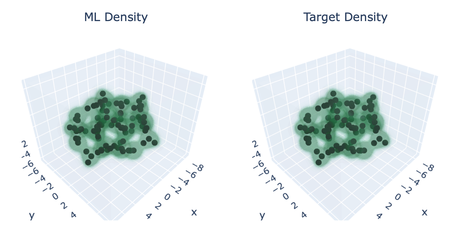Researchers at Sandia National Laboratories have developed a method for making previously impossible quantum chemistry calculations possible by using machine learning. A long standing problem in the quest to accurately simulate large molecular systems, like proteins or DNA, is the inability to perform accurate quantum chemistry calculations on these large systems. Sandia Truman Fellow Josh Rackers and his collaborators at UCLA, MIT, and École Polytechnique Fédérale de Lausanne were able to train a machine learning model to accurately predict the electron densities of large systems by providing the model with small-scale training examples. This was made possible by utilizing a new type of neural network algorithm, Euclidean Neural Networks, that are especially designed for 3D machine learning problems. The model is able to make quantum chemistry predictions for systems of thousands of atoms in under a second – a calculation that would take decades or more with current quantum chemistry programs.
An arXiv pre-print of this work is available at https://arxiv.org/abs/2201.03726
